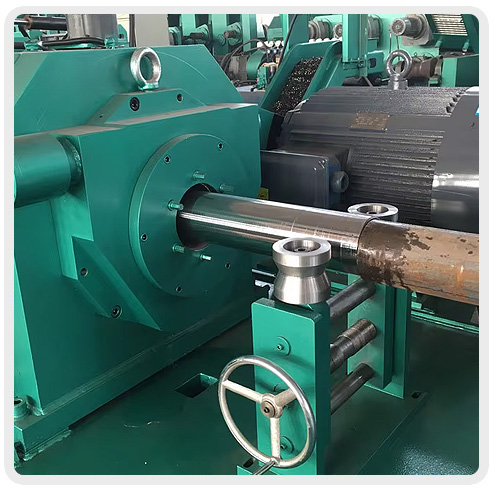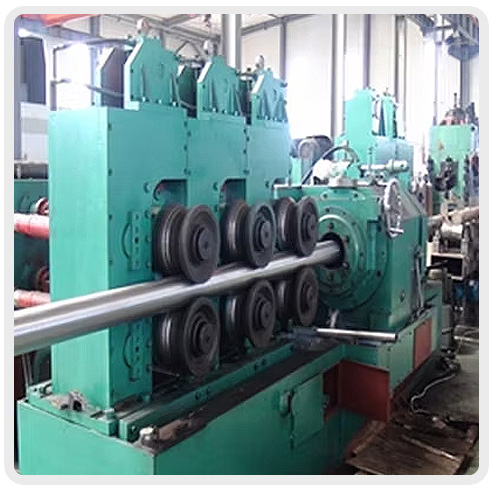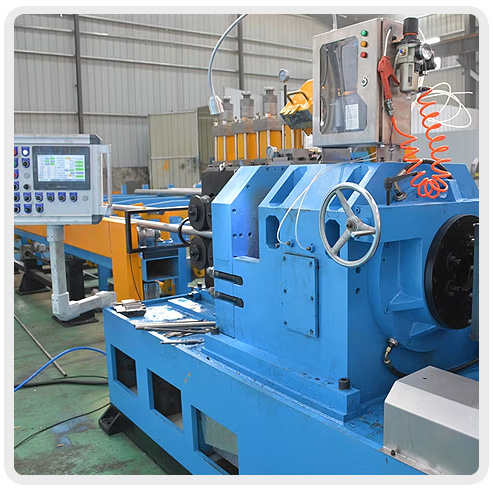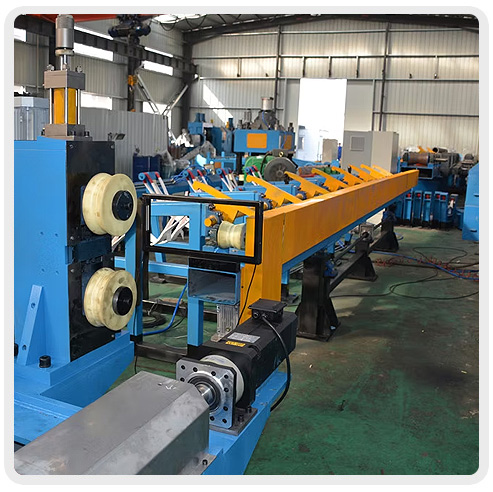Peeling Lines - Bar to Bar and Coil to Bar
Peeling Lines - Bar to Bar and Coil to Bar are both critical for processing bars with high-quality finishes, but they cater to different types of raw material input. While Bar-to-Bar Peeling Lines work with individual bars, Coil-to-Bar Peeling Lines are designed to process bars that come from coils. Both setups integrate several processes such as peeling, straightening, polishing, and cutting, ensuring that the final product meets precise specifications for a wide range of industries.
Bar-to-Bar Peeling Lines
- Raw Material: The system works directly with individual bars that are typically fed into the line one by one.
- Process Flow:
- Peeling: Removes surface defects from each bar, ensuring a clean surface.
- Straightening: Bars may be slightly bent during processing, so straightening ensures they are perfectly aligned.
- Polishing/Grinding: Ensures a smooth, high-quality finish on the bar.
- Cut to Length: Bars are cut to specific lengths as required.
- Advantages:
- Ideal for Custom-Length Bars: Perfect when individual bars of varying lengths need to be processed.
- Precise Surface Treatment: Bars are processed individually, allowing for a more controlled surface finish.
- Applications Common in steel mills, automotive, aerospace, and construction industries where bars are made to order or in specific lengths.
Coil-to-Bar Peeling Lines:
- Raw Material: This system processes bars from coils, where the coils are unwound and then transformed into bars.
- Process Flow:
- Unwinding: Coils are unwound into a continuous bar.
- Peeling: The outer layer of the bar is removed, eliminating surface imperfections such as rust, oxidation, or scale.
- Straightening: The continuous bar may need to be straightened, especially after unwinding, ensuring a uniform shape.
- Polishing/Grinding: The surface of the bars is polished or ground for improved quality and finish.
- Cut to Length: The continuous bars are cut to precise lengths, depending on the production requirements.
- Advantages:
- Higher Throughput: The continuous processing of coils allows for faster production compared to individual bars.
- Reduced Handling: The use of coils reduces the need for individual loading and unloading, streamlining the production process.
- Space Efficiency: Coil-to-bar systems are especially useful for high-volume production, as they reduce material handling.
- Applications: Primarily used in high-volume production of steel, construction materials, and other metal products that are usually processed from coils.
Comparison of Bar-to-Bar and Coil-to-Bar Peeling Lines
| Feature | Bar-to-Bar Peeling Line | Coil-to-Bar Peeling Line |
|---|---|---|
| Input Material | Individual bars | Coils of metal wound into rolls |
| Processing Speed | Generally slower (one bar at a time) | Faster (continuous bar processing from coils) |
| Surface Finish | Excellent for precise, high-quality surface finish | High-quality finish, but the focus is on continuous processing efficiency |
| Flexibility | Ideal for producing custom lengths or small batches | More suited for large-scale, high-volume production |
| Straightening Requirement | Individual bars are straightened as needed | Continuous bars straightened after unwinding |
| Applications | Custom or specific orders, automotive, aerospace, construction | High-volume production for steel, bars, construction materials |
| Automation | Fully automated with integrated systems | Fully automated for high-volume, continuous production |
Combining Bar-to-Bar and Coil-to-Bar Peeling Lines:
In modern manufacturing plants, Peeling Lines can be set up to process both Bar-to-Bar and Coil-to-Bar, allowing the flexibility to handle both types of raw materials. The integration of multiple processes (peeling, straightening, polishing, and cutting) in a seamless line enhances productivity and ensures high-quality products.



